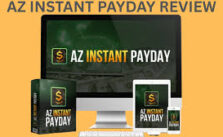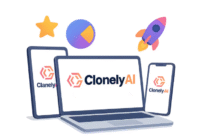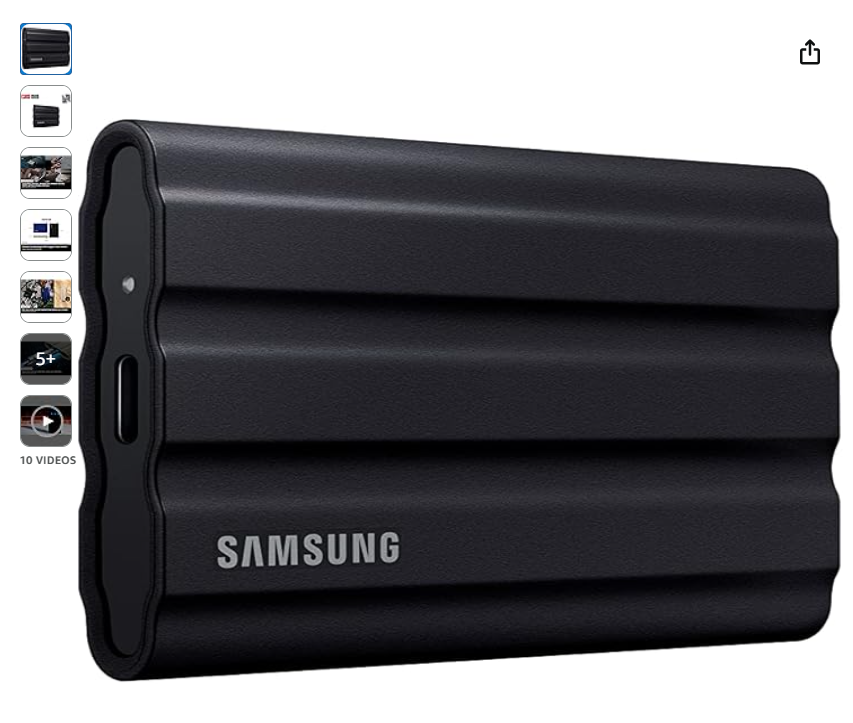Overview — What is Kiddy Store Fortune?
Kiddy Store Fortune is a turnkey online program designed to help entrepreneurs build, launch, and grow an eCommerce store specializing in children’s products. The program bundles pre-built store templates, product lists, plug-and-play content, traffic strategies, and tutorials into one package. Its promise is to remove most of the technical friction and provide a repeatable blueprint for selling baby gear, toys, learning materials, and family-oriented products online.

This review goes beyond the sales page and digs into the practical steps, timelines, costs, and what kind of results you can reasonably expect. If you want to create a niche store for kids but don’t want to start from scratch, this program is positioned as a fast-track solution — but let’s examine the reality.
Quick Verdict
In short: Kiddy Store Fortune is a solid starting point for beginners who want a guided approach and ready-made assets for a children’s niche store. It reduces the technical setup time and includes templates and marketing blueprints. However, it is not a magic button; winners still need consistent execution, budget for initial traffic, and product testing. For those willing to implement the system, it provides value — for those expecting instant passive income, it will be disappointing.
Key Features — What You Get
Kiddy Store Fortune typically includes the following core components (package contents may vary slightly by launch):
- Ready-made store templates optimized for conversion and kid-friendly aesthetics.
- Product lists & recommended suppliers with high potential SKUs and suggested margins.
- Done-for-you product descriptions and SEO-ready headlines to reduce copywriting time.
- Traffic blueprints — paid ad scripts, targeting suggestions, and organic traffic hacks.
- Step-by-step video training for store setup, order management, and customer care.
- Marketing assets — email sequences, ad creatives, social media posts, and banners.
- Support resources — community access or support channels for troubleshooting.

These features are aimed at reducing the time between purchase and first sale. The templates and content reduce friction, but they must be tested and adapted to real customer behavior.
Who Is This For?
Ideal candidates
- Beginners who want a guided ecommerce blueprint.
- Busy parents who prefer a pre-built brand they can run part-time.
- Existing sellers who want to expand into the kids niche quickly.
- Marketers who want tested creatives and ad scripts to shorten testing cycles.
Not a great fit if…
- You expect zero initial investment and instant income.
- You refuse to test products or spend any ad budget.
- You need highly customized, unique branded products from day one.
Realistically, the program helps those who are willing to invest time and a modest budget into testing and optimization. The more you learn from early customer responses, the better you can scale.
Step-by-Step Setup Guide — From Purchase to First Order
One of the biggest promises is speed: many buyers want to launch quickly. Here’s a condensed and realistic setup path you can follow after getting the package:
Step 1 — Unpack the Bundle
Open the package, download templates, read the quick-start guide, and watch the setup videos. Familiarize yourself with the structure — homepage, product pages, checkout, and email flows.
Step 2 — Choose Your Products
Review the recommended product list and supplier suggestions. Pick 5–10 SKUs to start. Choose a mix: one or two hero products plus a few cheaper add-ons.
Step 3 — Customize the Store
Upload product images, tweak descriptions to reflect your brand voice, and set shipping rules and prices. Optimize product titles and meta tags for simple keyword phrases (e.g., “soft baby blanket”).
Step 4 — Set Up Payments & Policies
Configure payment gateways, add privacy and refund policies, and test the checkout process. Complete at least one test order (you can use sandbox/test mode) to ensure everything functions.
Step 5 — Add Conversion Tools
Install basic analytics (Google Analytics), a Facebook Pixel, and an email capture form. Add a pop-up with a small discount to incentivize first-time buyers.
Step 6 — Launch Traffic Campaigns
Start with low-budget paid ads for product testing (Facebook/Instagram or Pinterest depending on product type). Run several creatives and audiences to discover winning combinations.
Step 7 — Collect Data & Iterate
Monitor which creatives and landing pages convert. Increase budget on profitable combinations and replace underperforming ones. Fine-tune product pages with social proof and clearer CTAs.
Realistic timeline: With focused work, many sellers can launch within a week and see their first small orders within the first 2–3 weeks when ads are used. Organic-only launches take longer but can also succeed with strong content and SEO.

Product Sourcing & Suppliers — Practical Tips
Sourcing reliable suppliers is the backbone of any ecommerce store. Kiddy Store Fortune provides supplier suggestions, but here are practical ways to reduce risk and keep margins healthy:
Where to Source
- Wholesale marketplaces — vetted suppliers on B2B sites.
- Local manufacturers — shorter shipping and easier returns for quality control.
- Private label — for long term scalability, consider private label on top-performing SKUs after initial validation.
Quality & Compliance
Kids products have higher scrutiny — safety standards, age-appropriate labeling, and sometimes certifications. Check supplier test reports, materials, and whether a product complies with toy safety regulations that apply to your target market.
Shipping & Returns
Offer clear shipping timelines and a fair return policy. Many buyers in the kids niche prioritize fast delivery and hassle-free returns, especially for gifts.
Store Design & Conversion Tips
Conversion optimization matters more than aesthetics alone. A clean, trust-building design and persuasive product pages lift conversion rates. Key elements to focus on:
- Hero section with clear value proposition and friendly imagery of kids or parents using the product.
- High-quality product photos from multiple angles and contextual images (showing scale, use-case).
- Bulleted benefits above the fold — highlight safety, materials, age range, free shipping, or warranty.
- Social proof — real reviews, star ratings, and user photos increase trust significantly.
- Urgency & scarcity — timers or stock counters can increase conversion when used ethically.

Example page elements
Clear CTA button (e.g., “Add to Cart”), simple checkout flow, and reassurance messages (e.g., “Ships within 24 hours” or “30-day returns”) remove friction and objections.
Use A/B testing on major elements — headlines, CTA colors, and product descriptions — and measure impact. Even small improvements compound over time.
SEO & Content Strategy for a Kids Store
Long-term, organic traffic is an affordable way to scale a store. With kids products, parents search for solutions and advice — so content that genuinely helps wins both trust and search rankings.
Content ideas that drive traffic
- “How-to” guides (e.g., “How to choose the safest baby blanket”).
- Product comparisons (e.g., “Top 5 travel baby monitors compared”).
- Gift guides (seasonal and evergreen).
- Safety & materials explainers for nervous parents.
- Use-case blog posts showing real-life scenarios (stories and photos).
On-page SEO tips
- Use descriptive product titles (avoid stuffing). Example: “Organic Cotton Baby Swaddle Blanket — Breathable, Hypoallergenic”.
- Write unique product descriptions — don’t copy supplier text verbatim.
- Schema markup for products and reviews helps rich snippets in search engines.
- Optimize images with descriptive alt text and compressed file sizes.
Combine content marketing with a small paid push to accelerate visibility: feature a cornerstone article on social and boost it to relevant audiences to gain initial traction and backlinks.

Paid Traffic — Smart, Cost-Effective Approaches
Paid ads are usually the fastest way to get sales if you have a budget to test. Here’s a practical advertising plan you can follow for the kids niche.
Phase 1 — Low-Budget Testing
Start with small daily budgets ($5–$15 per creative per audience) to test multiple creatives and audiences. Track metrics: cost per click (CPC), click-through rate (CTR), add-to-cart rate, and purchase rate.
Phase 2 — Scale Winners
Once a creative lands a consistent purchase at a profitable CAC (customer acquisition cost), slowly increase spend and duplicate the ad with minor variations.
Best Ad Platforms for Kids Products
- Facebook & Instagram: strong creative formats and precise targeting for parents and families.
- Pinterest: great for gift guides and discovery-driven shopping.
- Google Shopping: for purchase-intent traffic — works well if margins support it.
Compliance note: advertising platforms have rules for marketing to children or promoting children’s products. Avoid targeting children directly and follow platform policies closely to prevent ad account issues.

Email & Retention Strategies
Retention equals compounding revenue. Here are practical email flows to implement early.
- Welcome Series: 3 emails introducing the brand, benefits, and a small discount.
- Abandoned Cart: sequence with reminders and urgency (example: free shipping if completed within 24 hours).
- Post-Purchase: thank-you note, care instructions, and cross-sell relevant accessories.
- Re-engagement: occasional nurture emails with helpful content (safety tips, play ideas).
Use simple segmentation (first-time buyer vs returning) and personalize subject lines to improve open rates. A good email sequence reduces reliance on paid ads for repeat sales.

Scaling to Consistent Revenue — Systems & Mindset
Scaling means replicating the process that worked: find winning products, creatives, and audiences, then systematize them. Here’s how to scale intelligently.
Systematize Operations
- Document fulfillment and customer service SOPs (standard operating procedures).
- Automate inventory alerts and reorder thresholds.
- Outsource repetitive tasks (customer replies, image editing) to freelancers to focus on strategy.
Expand Product Lines
Once a hero product proves profitable, test adjacent SKUs and bundles. Bundling increases average order value (AOV) and improves perceived value for buyers.
Channel Diversification
Don’t rely on a single ad channel. Diversify across organic SEO, email, Pinterest, and occasionally influencer partnerships for credibility and reach.

Bonuses, Upsells & What to Expect
Many product packages include optional upgrade offers (OTOs) that provide additional funnels, traffic packs, or white-label rights. Evaluate these offers critically — prioritize upgrades that produce measurable value (e.g., done-for-you traffic campaigns or exclusive creatives) rather than one-off templates you can replicate yourself.
Be mindful of upsell costs: they can add quickly to your outlay. Focus first on validating a product and creative, then consider whether an upsell directly shortens your path to profit.
Case Studies & Real Results
Real user results vary widely. Here are three hypothetical, realistic case types based on what sellers commonly report after following a turnkey kids store system:
Case A — The Part-Time Parent
Launch approach: Low budget testing, organic social, modest FB ad tests. Time investment: 6–10 hours/week. Outcome: First small orders in 2–3 weeks, steady $300–$800/month within two months after optimizing one hero product.
Case B — The Marketer Who Scales
Launch approach: Advanced ad testing, multiple creatives, email automation, and A/B testing product pages. Outcome: Once profitable ad sets found, scaled to consistent $3,000–$7,000/month in 2–4 months.
Case C — The Over-optimistic Buyer
Launch approach: Invests in upsells but skips testing. Outcome: Poor ROI; learns to slow down, validate a single product, then reinvest cautiously.
These patterns emphasize testing and small-scale validation before scaling budgets.

Risks & Common Mistakes to Avoid
Some common pitfalls new sellers face when they use turnkey systems like Kiddy Store Fortune:
- No testing — scaling based on assumptions wastes ad spend.
- Ignoring product quality — kids products have high standards for safety and function.
- Bad supplier relationships — unreliable shipping damages brand reputation.
- Rushing to scale without tracking unit economics and margins.
Mitigation: test small, verify supplier certifications, keep margins healthy, and prioritize the customer experience.
Pricing, Guarantees & Refunds
Kiddy Store Fortune is commonly offered as a one-time payment with optional upgrades. Often, vendors provide a money-back guarantee window — read the fine print to understand the refund terms and what qualifies (digital products often have different refund policies than services).
Make sure you understand whether the package includes long-term updates, ongoing community access, or whether support is limited to a specific timeframe.
Frequently Asked Questions (FAQ)
1. Do I need prior experience to use Kiddy Store Fortune?
No — the product is designed for beginners and provides step-by-step instructions. However, success depends on following the system and doing the testing and optimization.
2. How much does it cost beyond the product price?
Expect to spend on domain, hosting (or hosted store), initial advertising budget for testing (recommended at least a few hundred dollars), and product inventory or dropshipping costs if applicable.
3. Are kids products regulated?
Yes. Many kids products have safety standards. Check region-specific regulations and ensure suppliers provide compliance documentation if needed.
4. Can I resell or white-label products?
Some suppliers offer private label options; the program may include reseller suggestions, but check licensing and trademark issues for branded items.
Conclusion & Recommendation
Kiddy Store Fortune offers a practical entry path into the children’s eCommerce niche. For motivated beginners, it shortens setup time and supplies marketing assets to accelerate validation. The biggest determinants of success are product selection, supplier reliability, and disciplined testing of creatives and audiences. Upsells can be helpful but are seldom necessary to prove a concept.
If you want to launch quickly with a structured blueprint and are willing to invest the time to test and optimize, this package is a legitimate tool to get you started. If you’re not ready to run ads, plan for a longer timeline focusing on organic content and SEO, but the templates and content still provide value.


